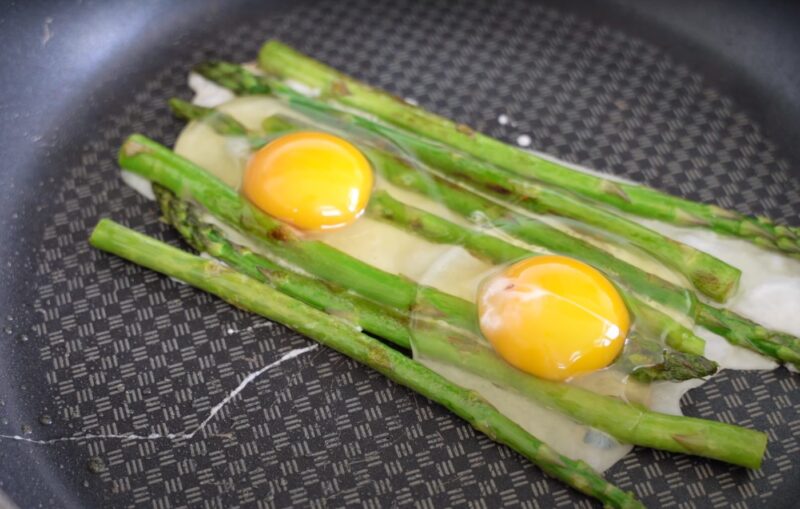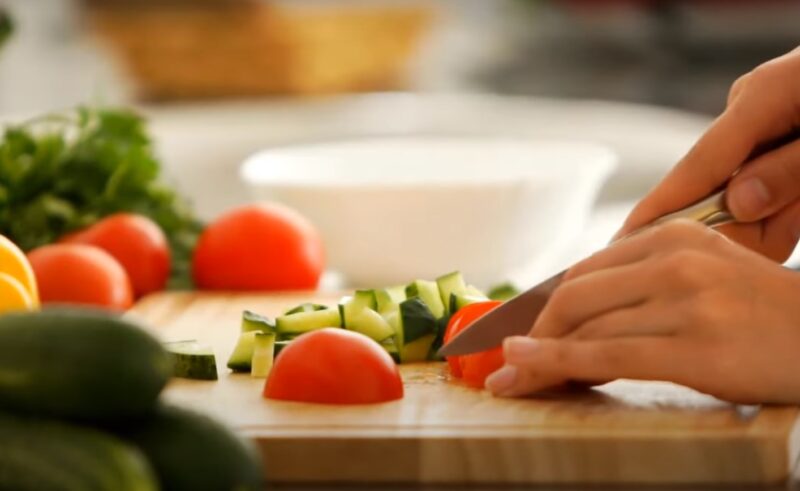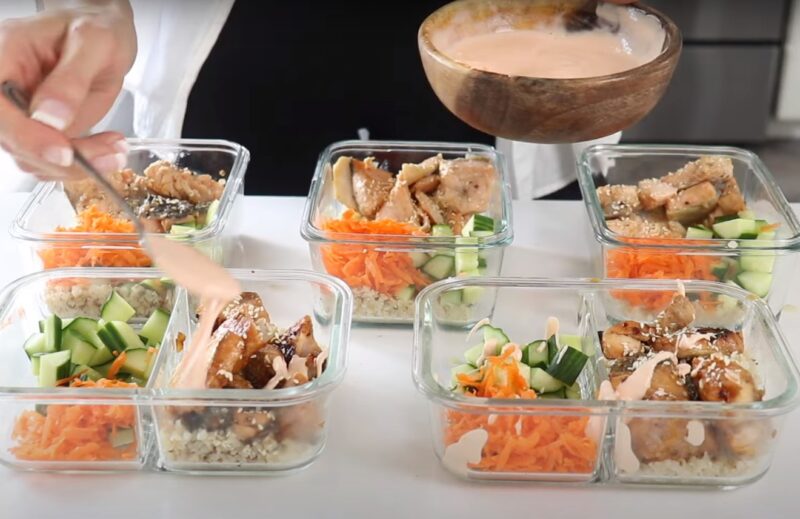You might be wondering what to eat on the paleo diet. That’s why we have this weekly paleo meal plan for you. It has lots of delicious and nutritious meals, recipes, and tips to make cooking easier and fun.
The paleo diet can seem hard at first, but it’s actually simple and good for you. You just need to know the basics, like what foods to eat and avoid, how to get ready and cook them in advance, and how to follow a meal plan that works for you.
Key Takeaways
An Example of 2-Week Paleo Plan
| Day | Breakfast | Lunch | Dinner |
|---|---|---|---|
| Day 1 | Banana Almond Pancakes, Chicken Sausage | Avocado Caprese Turkey Wrap, Berries | Meatballs, Zucchini Noodles |
| Day 2 | Scrambled Eggs, Blueberry Sausage | Leftover Meatballs | Chicken Pad Thai |
| Day 3 | Coco-cado Smoothie, Eggs | Cobb Salad | Pork Chops, Rosemary Balsamic |
| Day 4 | Fruity Nut “Cereal” | BBQ Pork Jar Salad | Ginger Shrimp Curry |
| Day 5 | Eggs, Kale, Berries | Leftover Shrimp Curry | Chicken “Pasta”, Sundried Tomato Pesto |
| Day 6 | Raspberry Almond Chia Pudding | Tuna Avocado Boats | Steak Fajitas |
| Day 7 | Egg Veggie Scramble, Avocado | Citrus Tarragon Chicken Salad | Turkey Lettuce Wraps |
| Day | Breakfast | Lunch | Dinner |
|---|---|---|---|
| Day 8 | Vegetable Egg Muffins, Ham | Leftover Turkey Wraps | Salmon Chowder |
| Day 9 | Pumpkin Smoothie Bowl | Apple-Butter Sandwiches, Deli Meat | Taco Salad, Beef |
| Day 10 | Bacon and Eggs | Herb Salad, Leftover Taco | Hawaiian Meatballs, Spaghetti Squash |
| Day 11 | Breakfast Tacos, Ham | Greek Chicken Jar Salad | Chicken Teriyaki, Cauli-rice |
| Day 12 | Apple Cinnamon Pancakes, Sausage | Leftover Chicken Teriyaki | Steak, Broccoli, Sweet Potato |
| Day 13 | Sweet Potato Hash, Sausage, Spinach | Leftover Steak, Broccoli | Thai Coconut Soup |
| Day 14 | Vegetable Frittata | Flex Day for Leftovers or Creative Meals | |
What is Paleo?
At its heart, the Paleo diet aims to mimic the eating habits of our hunter-gatherer ancestors, believing that our bodies are better adapted to consume the foods available to them, rather than the highly processed foods common in today’s Western diet.
This ancestral-inspired diet is designed to reduce inflammation within the body, minimize the intake of toxins and anti-nutrients, and alleviate stress on our systems.
The Principles of Paleo
- Real Over Processed: Choosing whole, unrefined foods that are as close to their natural state as possible.
- Nutrients Over Calories: Focusing on the nutritional content of foods, ensuring a rich intake of vitamins, minerals, and other essential nutrients.
- Optimizing Health: Selecting foods that support bodily functions and contribute to long-term health, avoiding those known to cause inflammation or contribute to chronic health issues.
The Connection with Primal Diet
The Paleo protocol shares its foundational principles with the Primal diet, another approach that suggests our contemporary diet does not align with our genetic predisposition.
Both diets advocate for a return to eating minimally processed foods, suggesting that such a shift can lead to significant health improvements.
The idea is that by consuming foods that our bodies are inherently designed to digest and utilize, we can achieve a better state of health and prevent many of the diseases that are prevalent in society today.
Why Should I Choose Paleo?

The Paleo approach is fundamentally about understanding the origins of real food and its impact on health. It encourages a deep dive into the nutritional value of what you eat, promoting an elimination of processed foods and common gut irritants. This not only improves your digestive health but also helps you become more attuned to your body’s reactions to different foods.
Increased Awareness and Food Quality
Adopting a weekly Paleo meal plan opens your eyes to the journey of food from its source to your plate. It fosters a greater appreciation for the quality of the plants, animals, and natural fats in your diet.
By focusing on the basics, the Paleo diet cuts through the noise of modern food marketing and brings you closer to eating as nature intended.
Benefits of Going Paleo
- Eliminates Processed Foods: By removing junk and processed items from your diet, you reduce your intake of harmful additives and preservatives, leading to a cleaner diet.
- Reduces Gut Irritants: Many people find relief from digestive issues by cutting out foods that are known to cause gut inflammation, such as grains, legumes, and dairy.
- Tailored to Your Body’s Needs: The Paleo diet encourages a personalized approach to eating, allowing you to discover which foods best support your health and well-being.
- Focuses on Food Quality: Emphasizing the importance of sourcing high-quality meats, vegetables, and fats ensures that you’re nourishing your body with the best possible ingredients.
It is a Lifestyle
Choosing Paleo is more than just a dietary change; it’s a commitment to a healthier way of living. It’s about making informed choices that align with your body’s natural needs, leading to improved health, vitality, and wellness.
The Paleo diet offers a pathway to rediscover the joy of eating real, wholesome foods, while also tuning into your body’s unique needs and preferences.
What To Eat On the Paleo Diet?
The Paleo diet focuses on consuming a variety of foods that support optimal health while avoiding those that can potentially lead to inflammation or digestive issues. Understanding which foods to embrace and which to avoid is crucial in adhering to the Paleo principles.
| Foods to Include | Foods to Avoid |
|---|---|
| Vegetables: Choose a variety of colorful veggies — seek local, and organic when possible. Meat, Fish, Eggs: Opt for grass-fed, pasture-raised, and wild-caught when you can. Roots and Tubers: Include starchier veggies such as beets, carrots, sweet potatoes, and winter squash. Nuts and Seeds: Go for raw, soaked, sprouted, or dry roasted options. Fruit: Focus on deeply colored and antioxidant-rich berries. | Sugar: This includes artificial sweeteners, sugar alcohols, natural sweeteners, syrups, nectars (avoid ingredients ending in “-ose”). Processed Foods: Generally speaking, if it comes in a package, wrapper, or box, think twice and read the ingredients. Industrialized Oils: Avoid man-made oils including vegetable, corn, soybean, canola, safflower, sunflower, rapeseed, and hydrogenated fats (trans-fats). Grains: Especially gluten containing and processed grains, such as barley, farro, rye, spelt, and wheat. Legumes: This category includes beans, soy, lentils, and peanuts. Dairy: Especially conventional and low-fat dairy products. |
What is the Reason Behind Strict Rules?
This approach is designed to avoid the pitfalls of modern eating habits, which often include high amounts of sugar, processed foods, and other items that can negatively impact health.
Here are the key reasons behind the exclusion of certain food groups from the Paleo diet.
Blood Sugar and Insulin Regulation

- Objective: The Paleo diet aims to stabilize blood sugar and insulin levels.
- Why: Consuming excessive carbohydrates, especially from processed sources, can lead to a rapid increase in insulin, followed by a sharp decline in blood sugar. This cycle can cause cravings for more carbs, potentially leading to insulin resistance over time.
Reduction of Food Addiction
- Objective: To combat sugar addiction and its consequences.
- Why: Sugar triggers a dopamine response in the brain, leading to a temporary feeling of pleasure. Over time, more sugar is required to achieve the same effect. Additionally, sugar promotes the growth of certain gut bacteria that can cause dysbiosis, leading to health issues and further cravings.
Gut Health as the Foundation of Overall Health
- Objective: To prioritize gut health for overall wellness.
- Why: A significant portion of the immune system is located in the gut. Consuming foods that can irritate the gut or lead to inflammation, such as grains, legumes, and dairy, can compromise gut health and, by extension, overall health.
Better Nutrient Density

- Objective: To ensure a diet rich in essential nutrients.
- Why: Foods encouraged on the Paleo diet, including quality meats, vegetables, certain fruits, nuts, seeds, and natural fats, are highly nutrient-dense, offering a superior nutritional profile calorie for calorie compared to other food groups.
Direct Feedback
- Objective: To facilitate a better understanding of how specific foods affect individual health.
- Why: Eliminating and then gradually reintroducing potential problem foods allows individuals to identify sensitivities and reactions. This process enhances awareness of how different foods influence well-being and can highlight “worst offenders” in the diet.
Always Plan Your Meals
Creating balanced Paleo meals becomes intuitive with practice, focusing on a combination of vegetables, proteins, healthy fats, and a spectrum of colors for a wide range of nutrients.
The Paleo Plate Method
- Fill Your Plate with Vegetables: Vegetables should form the foundation of your plate, providing essential vitamins, minerals, and fiber.
- Pick Your Protein: Choose high-quality protein sources like grass-fed meats, wild-caught fish, or free-range eggs.
- Add a Source of Healthy Fat: Incorporate healthy fats through avocados, nuts, seeds, or quality oils like olive or coconut.
- Eat the Rainbow: Include fruits and vegetables in a variety of colors to ensure a broad intake of antioxidants, phytonutrients, and essential nutrients.
Real Food for Diverse Nutrition
The concept of “eating the rainbow” is not just for kids but is a fundamental principle for anyone seeking to maximize the nutritional value of their meals. Different colors in foods represent a range of nutrients that contribute to overall health.
Teaching and practicing this principle can instill healthy eating habits, emphasizing the importance of natural and diverse food choices.
Snacks You Can Add to Your Meal Plan
Snacking is an important part of your Paleo meal plan. You need snacks that are tasty and filling to keep you energized between meals. You also want snacks that are easy to make and take with you. Here are some excellent solutions.
- Hard-Boiled Eggs and Fresh Berries: A protein-rich snack paired with the natural sweetness and antioxidants of berries.
- Guac for a Crowd with Veggie Sticks: Whip up a batch of guacamole and dip with crunchy vegetables like carrots, cucumbers, or bell peppers for a fiber-rich snack.
- Pineapple Cilantro Smoothie: Blend pineapple with cilantro, coconut milk, and a handful of spinach for a refreshing and nutrient-packed smoothie.
- Apple Salami Bites: Layer slices of apple with high-quality salami for a sweet and savory snack.
- Half an Avocado with Fresh Salsa: Fill the center of an avocado with fresh salsa for a snack rich in healthy fats and vitamins.
- Tropical Turmeric Bites: Create bite-sized snacks with coconut, pineapple, and turmeric for an anti-inflammatory boost.
- Grass-Fed Jerky and Olives: Combine the protein from jerky with the healthy fats from olives for a satisfying, savory snack.
- Trail Mix: Make your own trail mix with a selection of nuts, seeds, and dried fruit. Avoid adding sweeteners or chocolate to keep it Paleo-friendly.
A Complete Shopping List

| Category | Items |
|---|---|
| Produce | Apples, Avocados, Bananas, Bell peppers, Carrots, Frozen berries, Frozen broccoli, Garlic, Leafy greens, Lemons/limes, Onions |
| Meats | Chicken thighs, Eggs, Ground beef, Wild salmon |
| Oils | Avocado oil, Coconut, Extra virgin olive oil |
| Canned and Jarred | Apple cider vinegar, Bone broth, Coconut aminos, Coconut milk (canned full-fat), Olives |
| Nuts and Seeds | Almond butter, Coconut flakes (unsweetened), Raw walnuts, Sprouted pumpkin seeds |
You can also adjust some other recipes for this type of meal plans, for example to slightly change the recipe for a turkey burger and prepare it in the AriFryer.
FAQs
Is it OK to have a cheat day on paleo?
There is no definitive answer to this question, as different people may have different goals and reasons for following a paleo diet. Some may find that having a cheat day helps them stay motivated and enjoy their food, while others may prefer to stick to the paleo guidelines as much as possible. Ultimately, it depends on your personal preferences and how you feel after eating non-paleo foods.
Can you lose belly fat on paleo diet?
The paleo diet may help you lose belly fat, as it is high in protein, low in carbs, and reduces calorie intake by eliminating processed foods and added sugars. These factors can help boost your metabolism, reduce your appetite, and regulate your hormones that affect fat storage. However, belly fat loss also depends on other factors, such as exercise, stress, sleep, and genetics.
How long does it take to see paleo results?
The time it takes to see paleo results may vary depending on your starting point, your goals, and your adherence to the diet. Some people may notice changes in their weight, energy, mood, and digestion within a few weeks, while others may take longer to experience the benefits of the paleo diet. Generally, the more consistent you are with the paleo diet, the faster you will see results.
What happens the first week on paleo?
The first week on paleo can be challenging, as your body adjusts to the new way of eating and detoxes from the foods you used to eat. You may experience some side effects, such as headaches, fatigue, cravings, bloating, or constipation. These are normal and temporary, and they should subside as your body adapts to the paleo diet. To ease the transition, make sure you drink plenty of water, eat enough calories, and get enough rest.
Last Words
The Paleo diet is a simple and healthy way of eating, based on the foods that our ancestors ate. By choosing whole foods and avoiding processed ones, the Paleo diet helps you live a healthier life, improve your gut health, and get more nutrients.
